
Wine Culture and Information since 2002 - Volume 22
 Wine Culture and Information since 2002 - Volume 22 |
|
Contrasts of Etna Bianco and Offida PecorinoThe white wine of the famous Sicilian volcano compared with one of the most interesting white grapes of the province of Ascoli Piceno. |
|
The sensorial and analytical tasting of wine allows, so to speak, to continuously travel around the world. What we pour into the glass, in fact, allows you to admire unique and rare views, in which the story of the land is alive, of the men and women who live there, through the character and personality of their wines. This journey is always made up of small and big stages, discovering totally different places even by moving for few kilometers. Differences becoming even more evident in case we travel for many kilometers. In these cases – in fact – the composition of the soils and, last but not least, the enological characteristics adopted in the production of wines, including the use of different varieties, bring very different wines to our glasses and in every sense, including the sensorial one. These differences, especially those concerning the composition of the soil, represent one of the key factors of this month's tasting by contrast. In our glasses, in fact, we will compare a wine produced in the land of the famous Sicilian volcano – Etna – characterized by a volcanic soil, with the clayey one of the territory of Offida, in the province of Ascoli Piceno, Marches. The wines we are examining, in addition to the substantial differences in the environment and in the composition of the soil, are distinguished by the use of different grapes. Although the two wines are characterized by big differences, the factor of the soil composition nevertheless becomes interesting in the sensorial evaluation of the two wines. This month's tasting by contrast compares the white wines of two distant territories and produced with different grapes: Carricante, the dominant variety used for the production of Etna Bianco, and Pecorino for Offida. These are – as we will see shortly – grapes with very different organoleptic qualities, which wines, of course, are also strongly determined, in their respective sensorial profiles, by the conditions of the soil and the environment.
|
|
The wines produced in the area of the Etna volcano certainly represent one of the most successful enological stories of recent years in Sicily. This extraordinary result is undeniably the result of concomitant and unique factors which have made this territory among those of greatest interest in the Italian wine scene. Wines of extraordinary finesse and elegance, the vineyards of this territory – in the eastern part of Sicily, in the province of Catania – are cultivated with native varieties, in particular Carricante and Catarratto for white wines, Nerello Mascalese and Nerello Cappuccio for red wines. It is a decidedly interesting combination, also thanks – and above all – to the environmental conditions of this area, as well as to the composition of the soil of volcanic origin, including grape varieties that here can express themselves at excellent levels. The wines of Etna, in fact, are characterized by absolutely unique finesse and elegance, with a personality in which emerges a crispness of absolute class, both in whites and reds. As for white wines – that is, the style we are examining in this month's tasting by contrast – the production disciplinary provides for the use of Carricante grape, for a minimum of 60%, and Catarratto Comune or Lucido for a maximum of 40%. Optionally, can also be used white grapes permitted for cultivation in Sicily. Although the disciplinary of this DOC area provides – for its white wines – the use of different varieties, the majority of producers choose to use Carricante only. It is, in fact, the autochthonous variety that is typically and historically found in this territory, in particular, in the high altitudes of the Etna volcano. Grape capable of abundant production, takes its name from the Sicilian dialect expression “u carricanti”, that is a variety capable of “filling up carts” with its abundant grapes. The cultivation is done according to the traditional alberello system – widespread in Sicily – and, thanks to the altitude of the vineyards, the effect of the sea breeze and the volcanic soil of Etna, the wines are characterized by vibrant crispness and aromas of remarkable finesse.
|
||||
|
Offida is one of the most interesting wine-growing areas in the Marches, becoming – in recent years – one of the most successful wine territories in the region. Land of white and red wines, Offida is today recognized as a territory with a Denominazione d'Origine Controllata e Garantita (Denomination of Controlled and Guaranteed Origin, DOCG) and its wines are exclusively produced with the grapes traditionally found in these lands. For the production of the Offida Rosso (red), in fact, the dominant variety is Montepulciano, whereas for white, sparkling and vin santo wines, the production provides for the use of the historic Pecorino and Passerina varieties. It must be said, in any case, the minimum quota of these varieties provided for the production of these wines is 85%, while the remainder can be represented by varieties permitted to cultivation in the Marches region. The denomination spreads in the provinces of Ascoli Piceno and Fermo, bordering the Adriatic Sea. The wines of this territory are distinguished – compared to wines produced with the same grapes in other territories – for a particular personality and finesse, qualities given not only by the grape varieties used, but also by the specific characteristics of the territory as well as the influence of the maritime climate. Of the wines belonging to the Denominazione d'Origine Controllata e Garantita Offida, for our tasting we take into consideration the one produced with Pecorino, the magnificent glory of this land. For the sake of completeness, it should be noted Pecorino is also found in Abruzzo – used for the production of DOC wines – and, marginally, in Umbria, Lazio and other regions of central-southern Italy. The origin of the name of the grape is still today subject of doubts and suppositions. The hypotheses on the origin of the name “pecorino”, in fact, are still uncertain today. It should be noted pecora is Italian for sheep and pecorino is the cheese made from sheep milk, however it is – in any case – excluded the association with this cheese. Some associate it with sheep shepherds, alluding to the extreme humbleness and simplicity of its wines, others still to the fact the sheep, in fact, would be particularly fond of the sweet clusters of this grape. If the origin of the name still raises doubts, the quality of the wines produced with Pecorino grape, and in particular those from Offida, is instead absolute certainty.
|
The wines we will pour into the glasses of our tasting by contrast are characterized – as usual – by enological and productive analogies, that is, by factors which can ensure the least possible interference due, for example, to the use of wooden containers. This premise is essential as both Etna Bianco and Offida Pecorino can be produced with the fermentation and aging in cask. We will therefore make sure the two bottles we are going to evaluate contain wines produced exclusively by fermentation and aging in inert containers, preferably the steel tank. Furthermore, we will pay attention to the composition of the two wines, as the respective production disciplinary allow the use of many varieties. For this reason, we will make sure Etna Bianco is exclusively produced with Carricante and Offida Pecorino with the homonymous variety only. As far as the vintage is concerned, we will examine wines produced in the most recent harvest. Etna Bianco and Offida Pecorino are poured into their respective tasting glasses at a temperature of 10 °C. (50 °F) Let's pour the two wines into the glasses and start this month's tasting by contrast. The first wine we take into consideration is Etna Bianco, therefore – by tilting the glass over a white surface – we observe the base in order to evaluate the color and transparency. Etna Bianco is often characterized by an intense and brilliant straw yellow color; by placing an object in contrast between the glass and the white surface, we can detect a high transparency. The nuance of the Sicilian white – still observed by holding the glass tilted over the white surface, towards the opening – reveals and confirms a straw yellow color, frequently tending to greenish yellow. Let's move on to the evaluation of the appearance of Offida Pecorino and, by tilting the glass over the white surface, let's observe the base. The white of the Marches appears to our eyes with a brilliant straw yellow color, sometimes with greenish hues. Transparency, also in this case, is very high. The nuance of Offida Bianco, observed at the edge of the wine, towards the opening of the glass, shows a greenish yellow color. The aromas of Etna Bianco are mainly characterized by the profile of its dominant variety – Carricante – in addition to the particular composition of the volcanic soil in which the vineyards are grown. This characteristic, which is fundamental for all the varieties, particularly distinguishes the wines produced with Carricante in the territory of the Etna volcano. To the nose are perceived extremely fine and pleasing fruity and floral sensations, in both cases of fresh fruit and flowers, never ripe, and decidedly elegant. Among the primary perceptions in Carricante wines produced in the Etna area, we have sensations of peach, citrus, pear and apple, sometimes followed by a touch of anise. As far as flowers are concerned, in Carricante wines are mainly found aromas of broom, orange blossom and hawthorn. Moreover, Etna wines offer the senses a pleasing mineral sensation. No less elegant and refined, Offida Pecorino is characterized by aromas of white and yellow pulp fruits, in particular apple, pear, peach, citrus and plum. The world of flowers is well represented by hawthorn and broom, including aromatic herbs, in particular mint, thyme and anise. In Offida Pecorino wine can also be perceived aromas of medlar, pineapple and hazelnut. Let's resume our tasting by contrast and proceed with the analysis of the olfactory profiles of Etna Bianco and Offida Pecorino. As in the previous phase, the first wine we examine is the Sicilian one. By holding the glass in vertical position, without swirling, let's do the first smell in order to appreciate the opening of the wine, that is the identifying aromas. From the glass emerge – intense and clean – aromas of apple, citrus and hawthorn, often followed by the aroma of orange blossom. Let's now swirl the glass – an operation favoring the development of the remaining aromas – and let's do the second smell. The olfactory profile of Etna Bianco is completed with pear, plum, peach, citron, broom, sometimes followed by the scent of anise and a marked minerality. Let's now pass to the olfactory evaluation of the Offida Pecorino and, by holding the glass in vertical position, without swirling it, let's proceed with the first smell in order to evaluate the opening of the wine. From the glass, we can perceive intense and clean aromas of apple, pear, plum and hawthorn. Let's now swirl the glass, therefore favoring the development of the wine's aromas, and let's do a new smell. The olfactory profile of Offida Pecorino is completed with peach, broom, pineapple, medlar, hazelnut and citrus fruits, also in this case, frequently followed by the scent of anise. Let's move on to the gustatory evaluation of the two wines, proceeding with the analysis of Etna Bianco. Let's take a sip of the Sicilian wine in order to evaluate its attack, that is, the initial and primary sensations perceived in the mouth. The Sicilian wine expresses a pleasing crispness followed by a proper sensation of roundness given by alcohol, expressing a perfect balance. The flavors of apple, plum and citron are clearly perceived, as well as a pleasing hint of minerality followed by the flavor of anise. It should also be noticed the good structure of the wine, while expressing decidedly high characters of finesse and elegance. Let's now pass to the evaluation of Offida Pecorino's attack and take a sip of the wine from Marches. In the mouth can be perceived the clear crispness given by acidity, promptly balanced by the round effect of alcohol, extremely pleasing. The structure of the wine is very good, often fuller than the Sicilian wine. In the mouth can be clearly perceived the flavors of apple, plum, pear and a pleasing hint of hazelnut and peach, often followed by the flavor of anise. Let's conclude this month's tasting by contrast with the evaluation of the final sensations Etna Bianco and Offida Pecorino leave in the mouth after swallowing. In particular, we focus on taste-olfactory persistence, one of the most important factors of the quality in a wine. The first wine of which we evaluate the finish, as in the previous phases, is Etna Bianco. The finish of the Sicilian wine is persistent and in the mouth can be clearly perceived the elegant crispness of acidity, well supported by the roundness of alcohol. Moreover, we can continue to perceive the flavors of apple, plum, citron and pear, with pleasing hints of minerality. The finish of the Offida Pecorino is equally persistent – in both wines is perceptible for over ten seconds – and in the mouth can be clearly perceived the sensation of crispness given by acidity, as well as the roundness of alcohol. The perception of the structure is also very evident, generally more intense than Etna Bianco. In the mouth, moreover, are still perceived the flavors of apple, plum, pear, peach and hazelnut.
|
||||||||
Wines of the Month |
|
|
|
Score legend Prices are to be considered as indicative. Prices may vary according to the country or the shop where wines are bought |
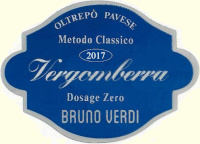
|
|
Oltrepo Pavese Metodo Classico Dosaggio Zero Vergomberra 2017 |
|
| Bruno Verdi (Lombardy, Italy) | |
 Pinot Nero (85%), Chardonnay (15%) Pinot Nero (85%), Chardonnay (15%) | |
| Price: € 25.00 | Score: |
 Brilliant straw yellow and nuances of golden yellow, very transparent,
fine and persistent perlage. Brilliant straw yellow and nuances of golden yellow, very transparent,
fine and persistent perlage.
 Intense, clean, pleasing, refined and elegant, starts with hints of
apple, plum and bread crust followed by aromas of hawthorn, acacia,
grapefruit, pear, bergamot, banana, cocoa butter, praline, linden, honey
and almond. Intense, clean, pleasing, refined and elegant, starts with hints of
apple, plum and bread crust followed by aromas of hawthorn, acacia,
grapefruit, pear, bergamot, banana, cocoa butter, praline, linden, honey
and almond.
 Effervescent and crisp attack, however balanced by alcohol, good body,
intense flavors, agreeable. Effervescent and crisp attack, however balanced by alcohol, good body,
intense flavors, agreeable.
 Persistent finish with flavors of apple, plum and grapefruit. Persistent finish with flavors of apple, plum and grapefruit. The base wine ages for 6 months in barrique. Refermented in bottle and
aged on its lees for 40 months. The base wine ages for 6 months in barrique. Refermented in bottle and
aged on its lees for 40 months.
|
|
 Pasta with mushrooms, Roasted fish, Roasted white meat, Mushroom soups Pasta with mushrooms, Roasted fish, Roasted white meat, Mushroom soups |
|
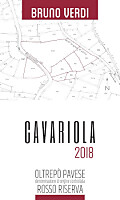
|
|
Oltrepo Pavese Rosso Riserva Cavariola 2018 |
|
| Bruno Verdi (Lombardy, Italy) | |
 Croatina (55%), Barbera (25%), Uva Rara (10%), Ughetta di Canneto (10%) Croatina (55%), Barbera (25%), Uva Rara (10%), Ughetta di Canneto (10%) | |
| Price: € 30.00 | Score: |
 Deep ruby red and nuances of ruby red, little transparency. Deep ruby red and nuances of ruby red, little transparency. Intense, clean, pleasing, refined and elegant, starts with hints of
black cherry, plum and blackberry followed by aromas of violet, blueberry,
raspberry, cocoa, tobacco, cinnamon, mace, vanilla and menthol. Intense, clean, pleasing, refined and elegant, starts with hints of
black cherry, plum and blackberry followed by aromas of violet, blueberry,
raspberry, cocoa, tobacco, cinnamon, mace, vanilla and menthol.
 Properly tannic attack and however balanced by alcohol, good body,
intense flavors, agreeable. Properly tannic attack and however balanced by alcohol, good body,
intense flavors, agreeable.
 Persistent finish with flavors of black cherry, plum and blackberry. Persistent finish with flavors of black cherry, plum and blackberry. 20 months in barrique, 8 months in cement tanks, at least 10 months in
bottle. 20 months in barrique, 8 months in cement tanks, at least 10 months in
bottle.
|
|
 Roasted meat, Stewed meat with mushrooms, Broiled meat and barbecue, Cheese Roasted meat, Stewed meat with mushrooms, Broiled meat and barbecue, Cheese |
|
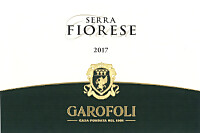
|
|
Castelli di Jesi Verdicchio Riserva Serra Fiorese 2017 |
|
| Garofoli (Marches, Italy) | |
 Verdicchio Verdicchio | |
| Price: € 18.00 | Score: |
 Intense straw yellow and nuances of golden yellow, very transparent. Intense straw yellow and nuances of golden yellow, very transparent. Intense, clean, pleasing, refined and elegant, starts with hints of
plum, apple and hawthorn followed by aromas of broom, peach, pear, quince,
grapefruit, pineapple, honey, anise, almond, flint and vanilla. Intense, clean, pleasing, refined and elegant, starts with hints of
plum, apple and hawthorn followed by aromas of broom, peach, pear, quince,
grapefruit, pineapple, honey, anise, almond, flint and vanilla.
 Crisp attack and however balanced by alcohol, full body, intense
flavors, pleasing roundness. Crisp attack and however balanced by alcohol, full body, intense
flavors, pleasing roundness.
 Very persistent finish with long flavors of apple, plum and almond. Very persistent finish with long flavors of apple, plum and almond. 12 months in barrique, 2 years in bottle. 12 months in barrique, 2 years in bottle. |
|
 Stuffed pasta with mushrooms, Roasted fish, Roasted white meat, Stewed fish Stuffed pasta with mushrooms, Roasted fish, Roasted white meat, Stewed fish |
|
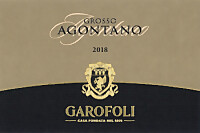
|
|
Conero Riserva Grosso Agontano 2018 |
|
| Garofoli (Marches, Italy) | |
 Montepulciano Montepulciano | |
| Price: € 22.00 | Score: |
 Deep ruby red and nuances of garnet red, little transparency. Deep ruby red and nuances of garnet red, little transparency. Intense, clean, pleasing, refined and elegant, starts with hints of
black cherry, blackberry and plum followed by aromas of dried violet,
blueberry, tobacco, face powder, chocolate, cinnamon, licorice, leather,
vanilla and menthol. Intense, clean, pleasing, refined and elegant, starts with hints of
black cherry, blackberry and plum followed by aromas of dried violet,
blueberry, tobacco, face powder, chocolate, cinnamon, licorice, leather,
vanilla and menthol.
 Tannic attack and however balanced by alcohol, full body, intense
flavors, agreeable. Tannic attack and however balanced by alcohol, full body, intense
flavors, agreeable.
 Very persistent finish with long flavors of black cherry, blackberry
and plum. Very persistent finish with long flavors of black cherry, blackberry
and plum.
 18 months in barrique, at least 24 months in bottle. 18 months in barrique, at least 24 months in bottle. |
|
 Game, Roasted meat, Stewed and braised meat, Hard cheese Game, Roasted meat, Stewed and braised meat, Hard cheese |
|
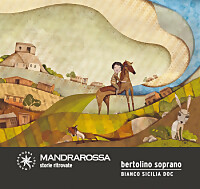
|
|
Sicilia Bianco Mandrarossa Bertolino Soprano 2018 |
|
| Cantine Settesoli (Sicily, Italy) | |
 Grillo Grillo | |
| Price: € 16.50 | Score: |
 Intense golden yellow and nuances of golden yellow, very transparent. Intense golden yellow and nuances of golden yellow, very transparent. Intense, clean, pleasing, refined and elegant, starts with hints of
apple, medlar and peach followed by aromas of broom, hawthorn, citron,
melon, pear, plum, honey, lavender, rosemary and mineral. Intense, clean, pleasing, refined and elegant, starts with hints of
apple, medlar and peach followed by aromas of broom, hawthorn, citron,
melon, pear, plum, honey, lavender, rosemary and mineral.
 Crisp attack and however balanced by alcohol, good body, intense
flavors, pleasing roundness. Crisp attack and however balanced by alcohol, good body, intense
flavors, pleasing roundness.
 Persistent finish with flavors of apple, peach and citron. Persistent finish with flavors of apple, peach and citron. One month in cement tanks, 11 months in cask. One month in cement tanks, 11 months in cask. |
|
 Stuffed pasta with fish, Roasted fish, Legume soups, Roasted white meat Stuffed pasta with fish, Roasted fish, Legume soups, Roasted white meat |
|
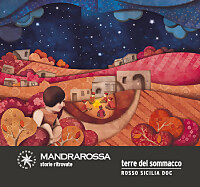
|
|
Sicilia Rosso Mandrarossa Terre del Sommacco 2017 |
|
| Cantine Settesoli (Sicily, Italy) | |
 Nero d'Avola Nero d'Avola | |
| Price: € 21.50 | Score: |
 Intense ruby red and nuances of ruby red, little transparency. Intense ruby red and nuances of ruby red, little transparency. Intense, clean, pleasing, refined and elegant, starts with hints of
blackberry, black cherry and plum followed by aromas of dried violet,
blueberry, tamarind, tobacco, carob, chocolate, mace, leather, vanilla and
menthol. Intense, clean, pleasing, refined and elegant, starts with hints of
blackberry, black cherry and plum followed by aromas of dried violet,
blueberry, tamarind, tobacco, carob, chocolate, mace, leather, vanilla and
menthol.
 Properly tannic attack and however balanced by alcohol, good body,
intense flavors, agreeable. Properly tannic attack and however balanced by alcohol, good body,
intense flavors, agreeable.
 Persistent finish with flavors of blackberry, black cherry and plum. Persistent finish with flavors of blackberry, black cherry and plum. 8 months in cement tanks, 19 months in cask, 8 months in bottle. 8 months in cement tanks, 19 months in cask, 8 months in bottle. |
|
 Roasted meat ,Broiled meat and barbecue, Stewed meat with mushrooms, Cheese Roasted meat ,Broiled meat and barbecue, Stewed meat with mushrooms, Cheese |
|
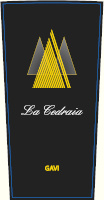
|
|
Gavi Selezione 2020 |
|
| La Cedraia (Piedmont, Italy) | |
 Cortese Cortese | |
| Price: € 11.00 | Score: |
 Pale straw yellow and nuances of straw yellow, very transparent. Pale straw yellow and nuances of straw yellow, very transparent. Intense, clean, pleasing and refined, starts with hints of apple, plum
and chamomile followed by aromas of hawthorn, broom, medlar, citrus fruits,
pear, honey and almond. Intense, clean, pleasing and refined, starts with hints of apple, plum
and chamomile followed by aromas of hawthorn, broom, medlar, citrus fruits,
pear, honey and almond.
 Crisp attack and however balanced by alcohol, good body, intense
flavors, agreeable. Crisp attack and however balanced by alcohol, good body, intense
flavors, agreeable.
 Persistent finish with flavors of apple, plum and medlar. Persistent finish with flavors of apple, plum and medlar. Aged in steel tanks. Aged in steel tanks. |
|
 Pasta with fish and vegetables, Sauteed fish, Sauteed white meat, Vegetable flans, Dairy products Pasta with fish and vegetables, Sauteed fish, Sauteed white meat, Vegetable flans, Dairy products |
|
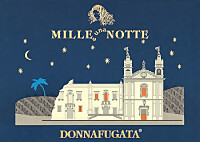
|
|
Sicilia Rosso Mille e Una Notte 2018 |
|
| Donnafugata (Sicily, Italy) | |
 Nero d'Avola, Petit Verdot, Syrah, Other Grapes Nero d'Avola, Petit Verdot, Syrah, Other Grapes | |
| Price: € 61.50 | Score: |
 Deep ruby red and nuances of ruby red, little transparency. Deep ruby red and nuances of ruby red, little transparency. Intense, clean, pleasing, refined and elegant, starts with hints of
plum, blackberry and black cherry followed by aromas of dried violet,
blueberry, cocoa, tobacco, face powder, leather, mace, licorice, vanilla
and eucalyptus. Intense, clean, pleasing, refined and elegant, starts with hints of
plum, blackberry and black cherry followed by aromas of dried violet,
blueberry, cocoa, tobacco, face powder, leather, mace, licorice, vanilla
and eucalyptus.
 Properly tannic attack and however balanced by alcohol, full body,
intense flavors, pleasing roundness. Properly tannic attack and however balanced by alcohol, full body,
intense flavors, pleasing roundness.
 Very persistent finish with long flavors of plum, blackberry and
black cherry. Very persistent finish with long flavors of plum, blackberry and
black cherry.
 14 months in barrique, at least 24 months in bottle. 14 months in barrique, at least 24 months in bottle. |
|
 Game, Braised meat, Roasted meat, Cheese Game, Braised meat, Roasted meat, Cheese |
|
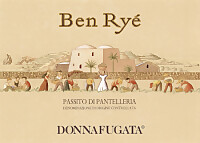
|
|
Passito di Pantelleria Ben Ryé 2019 |
|
| Donnafugata (Sicily, Italy) | |
 Moscato d'Alessandria Moscato d'Alessandria | |
| Price: € 56.00 | Score: |
 Intense amber yellow and nuances of amber yellow, transparent. Intense amber yellow and nuances of amber yellow, transparent. Intense, clean, pleasing, refined and elegant, starts with hints of
raisin, dried apricot and dried fig followed by aromas of date, candied
fruit, peach jam, quince jam, citrus fruit peel, banana, lychee, lavender,
honey, rosemary, linden and almond. Intense, clean, pleasing, refined and elegant, starts with hints of
raisin, dried apricot and dried fig followed by aromas of date, candied
fruit, peach jam, quince jam, citrus fruit peel, banana, lychee, lavender,
honey, rosemary, linden and almond.
 Sweet and round attack, however balanced by alcohol, good body, intense
flavors, pleasing crispness. Sweet and round attack, however balanced by alcohol, good body, intense
flavors, pleasing crispness.
 Very persistent finish with long flavors of raisin, dried apricot and
candied fruits. Very persistent finish with long flavors of raisin, dried apricot and
candied fruits.
 8 months in steel tanks, at least 12 months in bottle. 8 months in steel tanks, at least 12 months in bottle. |
|
 Dried fruit and jam tarts, Confectionery, Hard and piquant cheese Dried fruit and jam tarts, Confectionery, Hard and piquant cheese |
|
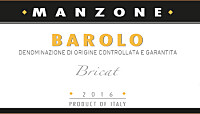
|
|
Barolo Bricat 2016 |
|
| Manzone Giovanni (Piedmont, Italy) | |
 Nebbiolo Nebbiolo | |
| Price: € 55.00 | Score: |
 Brilliant ruby red and nuances of garnet red, moderate transparency. Brilliant ruby red and nuances of garnet red, moderate transparency. Intense, clean, pleasing, refined and elegant, starts with hints of
cherry, plum and violet followed by aromas of rose, raspberry, strawberry,
blueberry, tobacco, chocolate, cinnamon, leather, licorice, vanilla and
menthol. Intense, clean, pleasing, refined and elegant, starts with hints of
cherry, plum and violet followed by aromas of rose, raspberry, strawberry,
blueberry, tobacco, chocolate, cinnamon, leather, licorice, vanilla and
menthol.
 Tannic attack and however balanced by alcohol, full body, intense
flavors, pleasing crispness. Tannic attack and however balanced by alcohol, full body, intense
flavors, pleasing crispness.
 Very persistent finish with long flavors of cherry, plum and raspberry. Very persistent finish with long flavors of cherry, plum and raspberry. 3 years in cask. 3 years in cask. |
|
 Game, Roasted meat, Stewed and braised meat, Hard cheese Game, Roasted meat, Stewed and braised meat, Hard cheese |
|
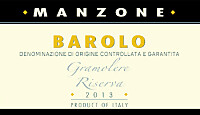
|
|
Barolo Riserva Gramolere 2013 |
|
| Manzone Giovanni (Piedmont, Italy) | |
 Nebbiolo Nebbiolo | |
| Price: € 80.00 | Score: |
 Brilliant ruby red and nuances of garnet red, little transparency. Brilliant ruby red and nuances of garnet red, little transparency. Intense, clean, pleasing, refined and elegant, starts with hints of
cherry, plum and dried violet followed by aromas of dried rose, raspberry,
strawberry, blueberry, cocoa, tobacco, leather, licorice, cinnamon,
cinchona, mace, thyme, vanilla and menthol. Intense, clean, pleasing, refined and elegant, starts with hints of
cherry, plum and dried violet followed by aromas of dried rose, raspberry,
strawberry, blueberry, cocoa, tobacco, leather, licorice, cinnamon,
cinchona, mace, thyme, vanilla and menthol.
 Tannic attack and however balanced by alcohol, full body, intense
flavors, pleasing crispness. Tannic attack and however balanced by alcohol, full body, intense
flavors, pleasing crispness.
 Very persistent finish with long flavors of cherry, plum and raspberry. Very persistent finish with long flavors of cherry, plum and raspberry. 5 years in cask. 5 years in cask. |
|
 Game, Stewed and braised meat, Roasted meat, Hard cheese Game, Stewed and braised meat, Roasted meat, Hard cheese |
|
|
||||||||
|
DiWineTaste Polls
|
| |||||||
Privacy Policy | |||||||


| Copyright © 2002-2024 Antonello Biancalana, DiWineTaste - All rights reserved |
| All rights reserved under international copyright conventions. No part of this publication and of this WEB site may be
reproduced or utilized in any form or by any means, electronic or mechanical, without permission in writing from DiWineTaste. |